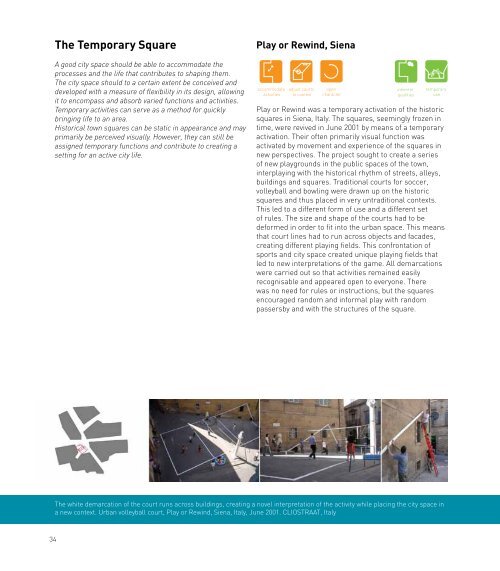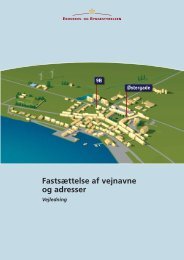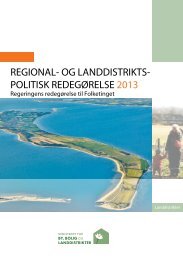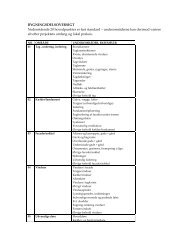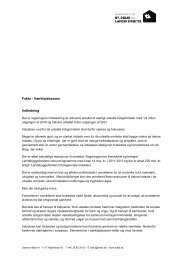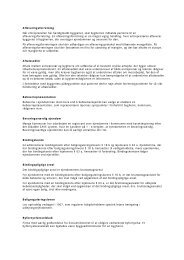Activating Architecture in Urban Spaces
Activating Architecture in Urban Spaces
Activating Architecture in Urban Spaces
You also want an ePaper? Increase the reach of your titles
YUMPU automatically turns print PDFs into web optimized ePapers that Google loves.
34<br />
The Temporary Square<br />
A good city space should be able to accommodate the<br />
processes and the life that contributes to shap<strong>in</strong>g them.<br />
The city space should to a certa<strong>in</strong> extent be conceived and<br />
developed with a measure of flexibility <strong>in</strong> its design, allow<strong>in</strong>g<br />
it to encompass and absorb varied functions and activities.<br />
Temporary activities can serve as a method for quickly<br />
br<strong>in</strong>g<strong>in</strong>g life to an area.<br />
Historical town squares can be static <strong>in</strong> appearance and may<br />
primarily be perceived visually. However, they can still be<br />
assigned temporary functions and contribute to creat<strong>in</strong>g a<br />
sett<strong>in</strong>g for an active city life.<br />
Play or Rew<strong>in</strong>d, Siena<br />
accommodate<br />
activities<br />
adjust courts<br />
to context<br />
open<br />
character<br />
<strong>in</strong>herent<br />
qualities<br />
Play or Rew<strong>in</strong>d was a temporary activation of the historic<br />
squares <strong>in</strong> Siena, Italy. The squares, seem<strong>in</strong>gly frozen <strong>in</strong><br />
time, were revived <strong>in</strong> June 2001 by means of a temporary<br />
activation. Their often primarily visual function was<br />
activated by movement and experience of the squares <strong>in</strong><br />
new perspectives. The project sought to create a series<br />
of new playgrounds <strong>in</strong> the public spaces of the town,<br />
<strong>in</strong>terplay<strong>in</strong>g with the historical rhythm of streets, alleys,<br />
build<strong>in</strong>gs and squares. Traditional courts for soccer,<br />
volleyball and bowl<strong>in</strong>g were drawn up on the historic<br />
squares and thus placed <strong>in</strong> very untraditional contexts.<br />
This led to a different form of use and a different set<br />
of rules. The size and shape of the courts had to be<br />
deformed <strong>in</strong> order to fit <strong>in</strong>to the urban space. This means<br />
that court l<strong>in</strong>es had to run across objects and facades,<br />
creat<strong>in</strong>g different play<strong>in</strong>g fields. This confrontation of<br />
sports and city space created unique play<strong>in</strong>g fields that<br />
led to new <strong>in</strong>terpretations of the game. All demarcations<br />
were carried out so that activities rema<strong>in</strong>ed easily<br />
recognisable and appeared open to everyone. There<br />
was no need for rules or <strong>in</strong>structions, but the squares<br />
encouraged random and <strong>in</strong>formal play with random<br />
passersby and with the structures of the square.<br />
The white demarcation of the court runs across build<strong>in</strong>gs, creat<strong>in</strong>g a novel <strong>in</strong>terpretation of the activity while plac<strong>in</strong>g the city space <strong>in</strong><br />
a new context. <strong>Urban</strong> volleyball court, Play or Rew<strong>in</strong>d, Siena, Italy, June 2001. CLIOSTRAAT, Italy<br />
temporary<br />
use


